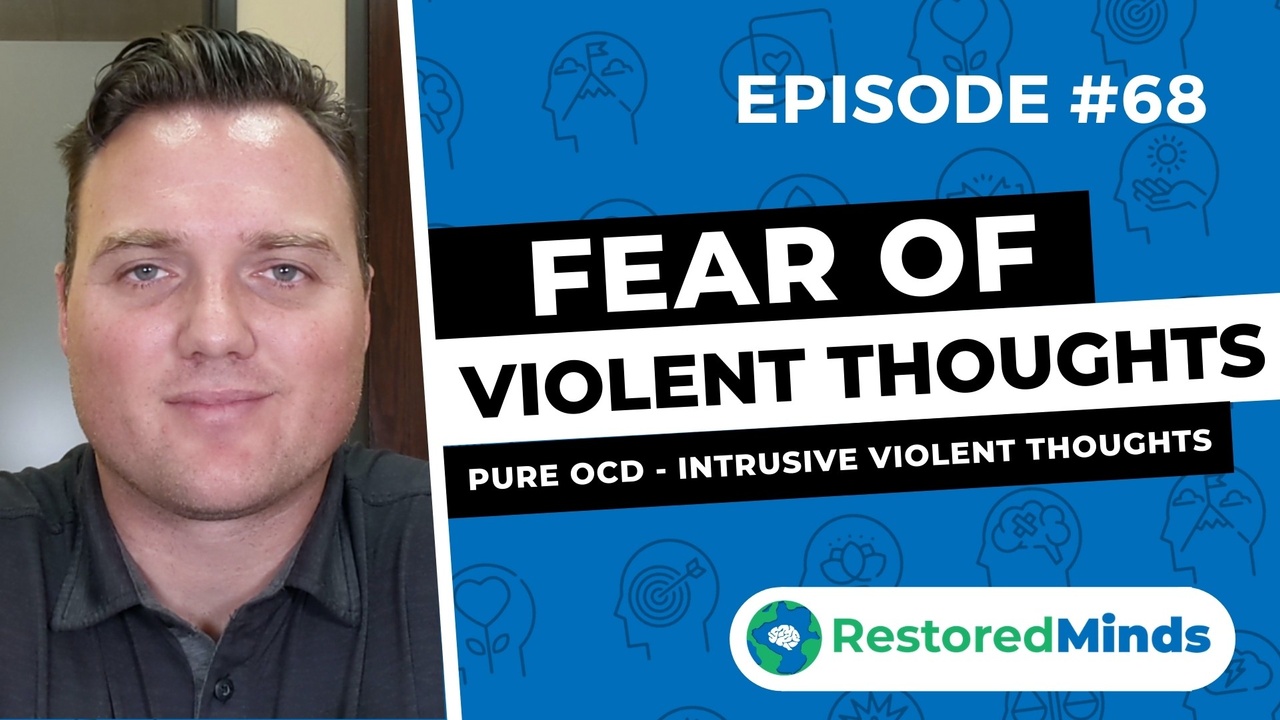Fear of Violent Thoughts - Pure OCD
Feb 09, 2021
Understanding Pure OCD: The Fear of Violent Thoughts
Introduction
Welcome to another insightful blog post from Restored Minds. Today, we delve into the intricate world of Pure OCD, focusing on the fear of violent thoughts and disturbing mental images. Our goal is to shed light on what Pure OCD is, share some case studies, and offer effective strategies for managing these distressing thoughts.
What is Pure OCD?
Pure OCD, often referred to as "Purely Obsessional OCD," is a form of Obsessive-Compulsive Disorder where individuals experience intrusive, unwanted thoughts without the outward compulsive behaviors typically associated with OCD. While the term "Pure O" suggests it's purely obsessional, it's essential to understand that mental rituals or compulsions are often present, even if they aren't visible.
Ego-Dystonic vs. Ego-Syntonic Thoughts
A key factor in differentiating OCD-related thoughts from other types is the concept of ego-dystonic vs. ego-syntonic thoughts. Ego-dystonic thoughts are those that conflict with a person's values, desires, and self-perception. For instance, a loving mother may find herself terrified by intrusive thoughts of harming her child, which are entirely against her true nature.
Conversely, ego-syntonic thoughts align with a person's beliefs and desires. In rare cases, individuals who act on violent thoughts do not find these thoughts distressing, making them ego-syntonic. This distinction is crucial in understanding why OCD sufferers find their thoughts so disturbing.
Common Violent Thoughts in Pure OCD
Everyone experiences intrusive thoughts at some point, but for individuals with Pure OCD, these thoughts trigger intense anxiety and lead to a cycle of compulsive behaviors. Common violent thoughts include:
-
Fear of harming a loved one
-
Fear of hurting oneself
-
Disturbing mental images of violence or death
These thoughts often lead to safety behaviors such as avoiding triggering situations or objects, engaging in thought suppression, or constantly checking to ensure they haven't acted on their thoughts.
Case Studies: Real-Life Experiences
To illustrate, let's explore a few case studies:
Case Study 1: The New Mother
A new mother finds herself plagued by the thought, "What if I accidentally smother my baby?" The thought is so distressing that she avoids holding her child, causing further distress and disruption in their bonding process.
Case Study 2: The Sleepwalker
A man sees a news story about someone harming their spouse while sleepwalking. Since he occasionally sleepwalks, he begins to fear that he might do the same, leading to sleepless nights and constant anxiety.
The Paradox of OCD and Anxiety
It’s essential to understand that the issue isn't the existence of these thoughts but the reaction to them. The more one tries to suppress or neutralize these thoughts, the more intense and frequent they become. This paradoxical effect leads to a vicious cycle of anxiety and compulsive behavior.
Effective Strategies for Managing Violent Thoughts
At Restored Minds, we offer several strategies and resources to help manage Pure OCD:
The Triple-A Response
Our "Take Back Control" training introduces the Triple-A Response:
-
Acknowledge
the thought without judgment.
-
Allow
the anxiety to be present without trying to change it.
-
Act
according to your values, not the anxiety-driven thought.
Conclusion
Understanding and managing the fear of violent thoughts in Pure OCD requires recognizing the ego-dystonic nature of these thoughts and addressing the compulsive behaviors that reinforce them. With the right strategies, it's possible to break free from the cycle of anxiety and regain control of your life.


